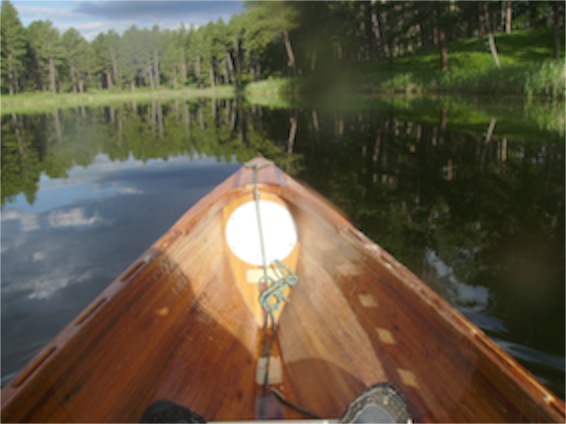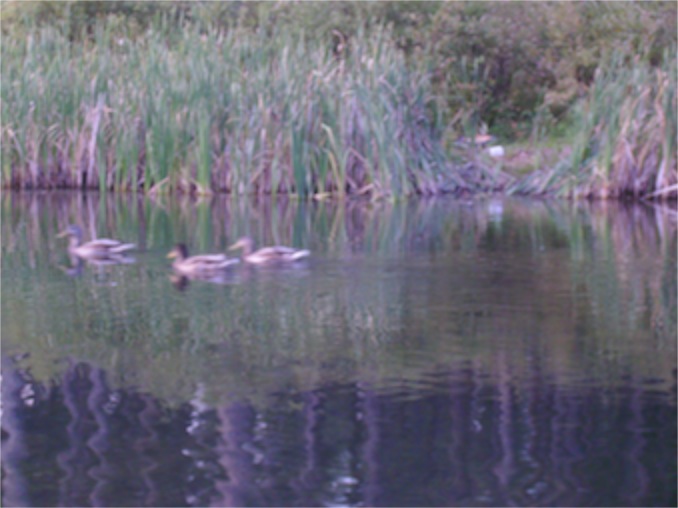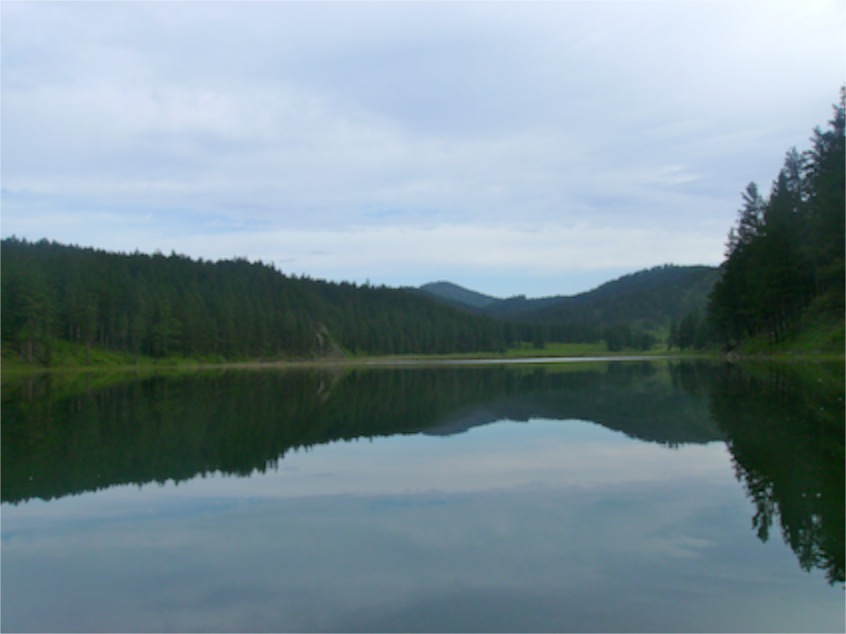Water
11/09/12 05:29
The Christian faith, like Judaism and Islam, grew up in semi-arid territory. Part of the story of the origins of our people is that water was in short supply. Still, one of the pivotal stories shared by all three religions is the story of Noah and the flood. Even a culture that has known the trials of insufficient precipitation also knows that too much water can be destructive. For most of the characters in the story of the great flood, the waters are the end of the world. Only a small remnant survived. We often tell the stories of our people as the tales of survivors. We almost didn’t make it, but somehow we survived.
Still, we have a deep appreciation for water. The water of baptism is the entry into the life of the Christian faith. In the sacrament we acknowledge that we do not control, nor do we fully understand the power and mystery of water as an agent of cleaning, healing and renewal. It becomes a symbol for the larger cycles of life and death in which our lives take their place.
The ancient traditions of our religion grew up in a pre-scientific age. Contemporary attempts at using the Bible as a scientific textbook always fall short in part because it is a way of laying upon the text a type of thinking that wasn’t a part of the original book. The Bible was around a long time before the rise of modern scientific methods. It shouldn’t surprise us that contemporary cosmologies paint a different picture than the book of Genesis.
Still, for the scientists and for those who read our ancient texts, water is at the center of the story. It is there in the second sentence of the book of Genesis: “The earth was without form and void, and darkness was upon the face of the deep; and the Spirit of God was moving over the face of the waters.” For the scientists, water is an essential element for life. The search for life on distant planets focuses on the search for water. Without water the types of carbon-based life that we know do not exist.
 Science and religion aside, we know intuitively that there is something unique and special about water. I have long been drawn to waters. We grew up alongside a river that carried fresh, clear snowmelt from the mountains on a journey that eventually flows with the Mississippi into the Gulf of Mexico. Up where we lived, in the early years, the water was clear enough to drink. What started as a drop, drop, drop of pure ice melt in the high country had become a rivulet and a brook and combined with other waters to make streams that flowed together to make the river. The rock and gravel beds of the river naturally filtered the water and the trout that came up the stream to spawn found ideal conditions for propagating a new generation of fish.
Science and religion aside, we know intuitively that there is something unique and special about water. I have long been drawn to waters. We grew up alongside a river that carried fresh, clear snowmelt from the mountains on a journey that eventually flows with the Mississippi into the Gulf of Mexico. Up where we lived, in the early years, the water was clear enough to drink. What started as a drop, drop, drop of pure ice melt in the high country had become a rivulet and a brook and combined with other waters to make streams that flowed together to make the river. The rock and gravel beds of the river naturally filtered the water and the trout that came up the stream to spawn found ideal conditions for propagating a new generation of fish.
Our river was cold enough that we didn’t have to be reminded of its source. Its journey from the edges of the glaciers was short enough that it didn’t have much time to absorb energy from the sun. Our lips would turn blue from the cold even in the middle of August.
Water molecules love to travel. Well, “love” is probably an inappropriate quality to assign to a molecule of water, but travel is what water does. It is carried aloft and gathers into clouds that are blown by the winds. A water molecule can literally circle the globe without fallings precipitation anywhere on the journey. But most of the water that makes it to the clouds does fall. It comes down as rain or snow or hail, depending on the temperatures and conditions that occur within the cloud. Some water falls where it is quickly evaporated and drawn back into the atmosphere. Some falls where it combines with other water molecules to form runoff and flow into rivers. Some falls where it is absorbed into the soil and becomes part of the conditions in which plants are formed. We obtain water molecules in the food that we eat as well as the beverages we drink. Some water falls as snow that can remain in the same place for quite a while before it melts. When snow falls on a glacier, it can become part of the glacier and stay on the same mountain for hundreds, even thousands, of years. The journeys of water are fascinating and worthy of the many books that have been written about water.
Sometime in the 1930’s the Civilian Conservation Corps began to build a dam on Spring Creek just a full miles upstream from where we live. The result is that there is a 375-acre lake just ten miles from our home. It is a convenient place to paddle or row a little boat. Yesterday I was on the lake a little after 6 a.m. and I had the lake to myself. Rowing is good exercise and my little boat is sleek and nimble in the water. It doesn’t take long to cross the lake to the far shore and explore the little inlets and areas all around the lake.
 I didn’t really have the lake all to myself. I watched a mother duck with her no-longer-tiny ducklings that scattered when I rowed into the area where they were feeding with their bottoms up in the air and their heads below water. Mother took quite a while to get the ducklings all together in a single bunch, never flying, only paddling about on the surface of the water. Apparently my presence wasn’t much of a treat, because soon the ducks resumed their activities as if I were no longer present.
I didn’t really have the lake all to myself. I watched a mother duck with her no-longer-tiny ducklings that scattered when I rowed into the area where they were feeding with their bottoms up in the air and their heads below water. Mother took quite a while to get the ducklings all together in a single bunch, never flying, only paddling about on the surface of the water. Apparently my presence wasn’t much of a treat, because soon the ducks resumed their activities as if I were no longer present.
I watched an eagle catch a fish. The big, usually graceful, bird looked a bit awkward as it splashed around in the water and then took off with a somewhat irregular flight pattern with the squirming fish in its talons. By the time the bird had reached treetop height, the powerful flying had resumed and it was clear that the fish would become a meal.
 And I watched the sunrise from the surface of the lake. We get beautiful sunrises in our part of the world. They are even more beautiful when one is on the water, where the reflection gives you a double dose of everything.
And I watched the sunrise from the surface of the lake. We get beautiful sunrises in our part of the world. They are even more beautiful when one is on the water, where the reflection gives you a double dose of everything.
I am still drawn to the water. I find it a place of rest and renewal. And when I emerge and return to the everyday I continue to think of the water and scan the skies for the sign of a few raindrops.
It isn’t just the water in the baptismal font that is sacred. The truth is that every drop is holy.
Still, we have a deep appreciation for water. The water of baptism is the entry into the life of the Christian faith. In the sacrament we acknowledge that we do not control, nor do we fully understand the power and mystery of water as an agent of cleaning, healing and renewal. It becomes a symbol for the larger cycles of life and death in which our lives take their place.
The ancient traditions of our religion grew up in a pre-scientific age. Contemporary attempts at using the Bible as a scientific textbook always fall short in part because it is a way of laying upon the text a type of thinking that wasn’t a part of the original book. The Bible was around a long time before the rise of modern scientific methods. It shouldn’t surprise us that contemporary cosmologies paint a different picture than the book of Genesis.
Still, for the scientists and for those who read our ancient texts, water is at the center of the story. It is there in the second sentence of the book of Genesis: “The earth was without form and void, and darkness was upon the face of the deep; and the Spirit of God was moving over the face of the waters.” For the scientists, water is an essential element for life. The search for life on distant planets focuses on the search for water. Without water the types of carbon-based life that we know do not exist.

Our river was cold enough that we didn’t have to be reminded of its source. Its journey from the edges of the glaciers was short enough that it didn’t have much time to absorb energy from the sun. Our lips would turn blue from the cold even in the middle of August.
Water molecules love to travel. Well, “love” is probably an inappropriate quality to assign to a molecule of water, but travel is what water does. It is carried aloft and gathers into clouds that are blown by the winds. A water molecule can literally circle the globe without fallings precipitation anywhere on the journey. But most of the water that makes it to the clouds does fall. It comes down as rain or snow or hail, depending on the temperatures and conditions that occur within the cloud. Some water falls where it is quickly evaporated and drawn back into the atmosphere. Some falls where it combines with other water molecules to form runoff and flow into rivers. Some falls where it is absorbed into the soil and becomes part of the conditions in which plants are formed. We obtain water molecules in the food that we eat as well as the beverages we drink. Some water falls as snow that can remain in the same place for quite a while before it melts. When snow falls on a glacier, it can become part of the glacier and stay on the same mountain for hundreds, even thousands, of years. The journeys of water are fascinating and worthy of the many books that have been written about water.
Sometime in the 1930’s the Civilian Conservation Corps began to build a dam on Spring Creek just a full miles upstream from where we live. The result is that there is a 375-acre lake just ten miles from our home. It is a convenient place to paddle or row a little boat. Yesterday I was on the lake a little after 6 a.m. and I had the lake to myself. Rowing is good exercise and my little boat is sleek and nimble in the water. It doesn’t take long to cross the lake to the far shore and explore the little inlets and areas all around the lake.

I watched an eagle catch a fish. The big, usually graceful, bird looked a bit awkward as it splashed around in the water and then took off with a somewhat irregular flight pattern with the squirming fish in its talons. By the time the bird had reached treetop height, the powerful flying had resumed and it was clear that the fish would become a meal.

I am still drawn to the water. I find it a place of rest and renewal. And when I emerge and return to the everyday I continue to think of the water and scan the skies for the sign of a few raindrops.
It isn’t just the water in the baptismal font that is sacred. The truth is that every drop is holy.